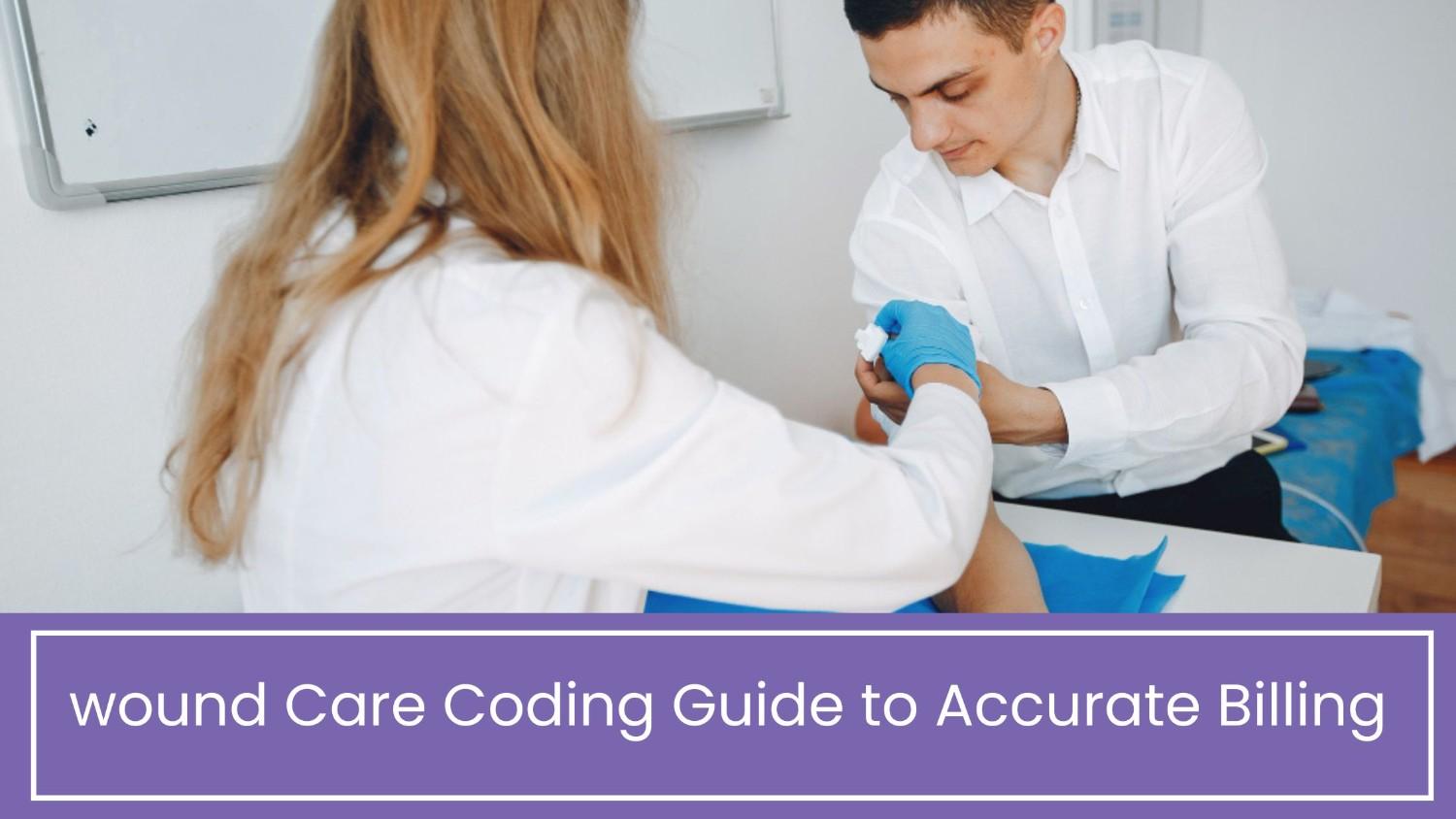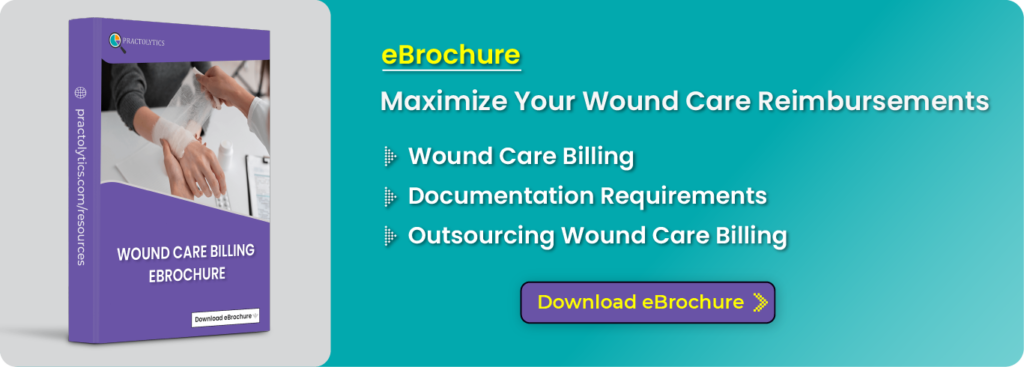wound Care Coding Guide to Accurate Billing
Wound care coding guide to accurate billing is essential for ensuring proper reimbursement and avoiding potential legal issues. Healthcare professionals must understand the coding system to navigate the complexities of wound care billing effectively. With the healthcare industry constantly evolving, staying updated on coding guidelines is crucial for accurate and compliant billing practices.
The Centers for Medicare and Medicaid Services (CMS) have specific guidelines and regulations for wound care coding, and failure to comply with these rules can result in severe penalties. Thus, it is imperative for healthcare professionals to have a thorough understanding of wound care coding to ensure compliance and accurate billing.
In this blog, we will break down the complexities of wound care coding and provide healthcare professionals with a comprehensive instruction manual on how to accurately code services. We will cover the intricacies of Wound Care Coding, Significant Codes, and Modifiers for Precise Charging and Best Practices for Accomplishing Exact Wound Care Coding and Billing. With this guide, a guide to accurate billing can confidently navigate wound care coding and make sure they get paid for their services in the right way.
Table of Contents
Navigating the Complexities of Wound Care Coding
Wound care coding is a complex area of medical coding that requires a thorough understanding of the different types of wounds, the various stages of wound healing, and the treatment modalities available. With the increasing prevalence of chronic wounds, healthcare professionals need to be well-versed in wound care coding to ensure accurate and timely reimbursement for their services.
The following are some tips for navigating the complexities of wound care coding:
1. Understand the different types of wounds
There are four types of wounds: acute, chronic, surgical, and traumatic. Acute wounds are caused by a sudden injury, such as a cut or burn. On the other hand, chronic wounds, like pressure ulcers, venous stasis ulcers, as well as diabetic foot ulcers, require more time to heal. Surgical wounds are incisions made during surgery, while traumatic wounds are caused by accidents or injuries.
It is essential to precisely identify the kind of wound being treated to ensure proper coding.
2. Familiarize yourself with the stages of wound healing
Hemostasis is the first step of wound healing, followed by inflammation, proliferation, and finally remodeling. During the hemostasis stage, the body stops bleeding and forms a clot. During the inflammatory stage, the body releases immune cells towards the wound area to prevent infection. In the proliferation stage, new tissue is formed to fill the wound. Finally, in the remodeling stage, the new tissue is strengthened and remodeled.
Understanding the stages of wound healing is crucial to properly document the progress of wound healing and ensure accurate coding.
3. Be aware of the different treatment modalities
There are several treatment modalities available for wound care, including debridement, dressings, topical agents, and negative pressure wound therapy. Debridement involves removing dead or infected tissue from the wound site. Topical agents, such as antibiotics or growth factors, may be applied to the wound to enhance healing. Negative pressure wound therapy involves applying suction to the wound to promote healing.
Each treatment modality has a specific code assigned to it, and it is important to use the correct code to ensure accurate reimbursement.
4. Document accurately and thoroughly
Accurate and thorough documentation is vital in wound care coding. Documentation should include the type of wound, the stage of wound healing, the treatment modalities used, and the progress of healing. In addition, any complications or comorbidities should be documented.
Incomplete or inaccurate documentation can lead to coding errors, reimbursement, and denials.
Important Codes and Modifiers for Accurate Billing
As a healthcare professional providing wound care, accurate billing is crucial for your practice’s financial success.
First, let’s understand what codes and modifiers are. In medical billing, codes are used to identify specific procedures, services, and supplies provided to patients. These codes are then employed to file insurance claims for reimbursement. Modifiers, on the other hand, are two-digit codes that provide additional information about a service or operation. When describing the kind of service, the region or location, or the service itself, modifiers are helpful.
Now let’s dive into the essential wound care codes and modifiers.
CPT Codes for Wound Care:
1.Surgical, medical, and diagnostic procedures are all documented using CPT codes. Below are some of the most commonly used CPT codes for wound care:
- 97597: Debridement (removal of damaged tissue), open wound, including topical application(s), wound assessment, use of a whirlpool, first 20 sq cm or less.
- 97598: Each additional 20 square centimeters of debridement.
- 97602: Removal of devitalized tissue from wound(s), non-selective debridement, without anesthesia, including topical application(s), wound assessment, and instruction(s) for ongoing care, per session.
- 97605: Negative pressure wound treatment, involving topical application(s), wound examination, and continued care instruction(s), each session, total wound(s) surface area less than or equal to 50 square centimeters.
- 97606: total wound(s) surface area greater than 50 square centimeters.
HCPCS Codes for Wound Care:
2. HCPCS codes are used for billing Medicare, Medicaid, and other insurance companies for supplies and services. The following are some of the most frequently used HCPCS codes for wound care:
- A6222: Gauze, impregnated with other than water, normal saline, or hydrogel, sterile, pad size 16 sq. in. or less, without adhesive border, each dressing.
- A6223: more than 16 sq. in., but less than or equal to 48 sq.in.
- A6234: Hydrocolloid dressing, wound cover, sterile, pad size 16 sq. in. or less, without adhesive border, each dressing.
- A6235: Hydrocolloid dressing, wound cover, sterile, pad size more than 16 sq. in. but less than or equal to 48 sq. in., without adhesive border, each dressing.
Modifiers for Wound Care:
3. Modifiers are used to indicate specific circumstances that may affect the reimbursement for service. The following are some of the most often employed wound care modifiers:
- -59: Distinct procedural service modifier (Used to indicate a separate and distinct service performed during the same visit)
- -LT: Left side modifier (Used to indicate the location of the wound- Left side of the body)
- -RT: Right side modifier (Used to indicate the location of the wound- right side of the body)
Best Practices for Achieving Accurate Wound Care Coding and Billing
1. Stay Up-to-Date with Coding Guidelines and Regulations
Coding guidelines and regulations are constantly changing, so it is essential to stay up-to-date with the latest updates. It is essential to have access to credible information sources such as the CMS- Centers for Medicare and AMA- Medicaid Services and the American Medical Association. Regularly reviewing updates and changes to the coding guidelines and regulations can help ensure accurate coding and billing.
2. Assign the Correct ICD-10-CM Code
The ICD-10-CM, which stands for International Classification of Diseases, 10th Revision, Clinical Modification, is a uniform classification system that is employed for the categorization of diagnoses. Accurate coding requires assigning the correct ICD-10-CM code to the patient’s condition. The code should accurately reflect the patient’s diagnosis and be backed by documentation there in the medical record of the patient.
3. Use Proper Modifiers
Modifiers are characters which indicate that a service or operation has been modified in some way. Accurate use of modifiers is essential to ensure proper coding and billing. Modifiers should be used only when necessary and should accurately reflect the changes to the service or procedure provided.
4. Document All Services Provided
Accurate documentation is crucial to accurate coding and billing. All services provided should be thoroughly documented in the patient’s medical record, including the date, time, and details of the service. To guarantee correct coding and billing, documentation should be precise, succinct, and accurate.
5. Understand the Reimbursement Process
Understanding the reimbursement process is important for accurate coding and billing. Healthcare providers should understand the payer’s reimbursement policies and procedures, including any preauthorization requirements, claim submission deadlines, and billing requirements.
6. Regularly Conduct Audits
Regularly conducting internal audits can help identify errors and ensure compliance with coding and billing regulations. Audits should be conducted regularly and should focus on areas of high risk, such as coding for high-cost services or procedures.
Final Thoughts
In conclusion, accurate wound care coding and billing are crucial aspects of healthcare revenue management. It requires expertise, attention to detail, and knowledge of current coding guidelines.
Practolytics is a top-notch coding and billing service provider that healthcare professionals can trust for their wound care coding needs. With our deep understanding of wound care coding, we offer accurate, reliable, and efficient coding and billing services that can help healthcare providers optimize their revenue cycle. By teaming with Us, medical practitioners can concentrate on providing great care to their patients while we manage the complex coding and billing chores. Choose Us for hassle-free, accurate wound care coding and billing.
ALSO READ – Top 5 Medical Billing Software to Look Out For in 2023
Talk to Medical Billing Expert Today — Get a Free Demo Now!






